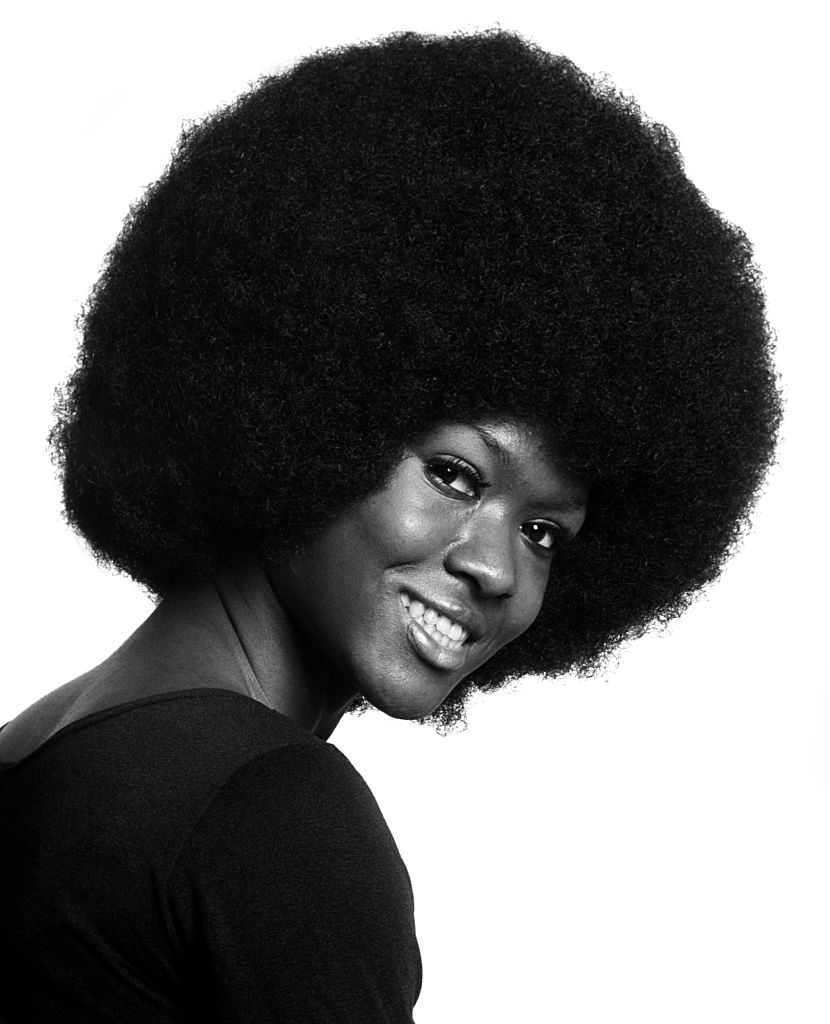
Source: H. Armstrong Roberts/ClassicStock / Getty
Did you know that the Black is Beautiful movement of the 60s was inspired by the revolutionary aesthetic of a man — two brothers to be specific? In this week’s throwback thought, we’re unpacking the history of how the movement got started and discussing its impacts as they relate to today’s natural hair acceptance.
For those who have heard the term “Black is Beautiful,” memories and/visons of the 60s and 70s might fill your head full of afros, blaxploitation films, Black empowerment, civil rights movements, and Black fists held in the air. What isn’t widely known about the imagery of that time is that many of the photos of Black women associated with the social and political movement all came from one Harlem photographer — Kwame Brathwaite.
He and his brother Elombe Brath were the visionaries who “co-founded, the African Jazz Arts Society and Studios (AJASS) and the Grandassa Models collective [which] popularized the phrase ‘Black is Beautiful’ in the late 1950s and early 60s through the ‘Naturally’ fashion shows.”
Last year, Eunice Townsend — one of the Grandassa models of that influential time — spoke of the meaning behind Brathwaite’s photography. She noted that in addition to enriching their community, the images he created were also about capturing the essence of the beauty and “greatness” Black women have.
“Kwame’s photography wanted to enlighten women and enlighten Harlem,” Townsend said in the clip below. “Enlighten the community about the greatness of Black women. AJASS took it upon themselves to invent a vehicle to demonstrate Black beauty.”
In their coverage of the Naturally shows AJASS put on in conjunction with the Grandassa models, last year the BBC also touched on how the events crafted the imagery we’ve come to associate with the Black is Beautiful movement. Their report beautifully captured the types of models who were included in the fashion shows.
“It featured Black women who had chosen to move away from Western beauty standards,” the outlet said of a Naturally’s 1962 show. Describing the aesthetic of Grandassa models in the show and who were photographed by Brathwaite, they continued, “The models who walked down the catwalk that night wore their afro hair with pride; their clothes were inspired by designs from Lagos, Accra and Nairobi; and their skin was darker and their bodies fuller-figured than the women pictured in fashion magazines, including black publications.”
There’s no question that as a socio-political movement, “Black is Beautiful” and Brathwaite’s work has had such an immense impact on the world we have now. Most prominently, they both shifted and redefined what standards of beauty were sought after for Black women both then and now. Although natural hair still isn’t 100% seen as the norm in Western society and Black women often still face challenges if they choose to rock their natural hair, the community of women who have chosen to stop chemically altering their hair’s texture and style it in ways that are minimally processed has grown tremendously. From a business standpoint, Business Wire reports that the global natural hair market “is expected to reach $14.5 billion by 2026.”
Black is Beautiful sowed the seeds for the acceptance of natural hair in a mainstream way — and because of the movement, those who choose to wear their hair naturally now have images that go decades back in terms of inspiration and the potential styling of their afros. As the phrase continues to be an important one for Black women today in the continuous to fight for the right to have our beauty be recognized and each and every one of us to be accepted, Black is Beautiful is still an important and encompassing movement now as the legacy lives on.









